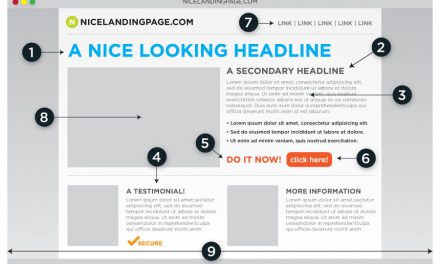There are many things to consider when managing a website nowadays. Because the competition is diverse, you’ll need to put out quality content regularly, but that’s only part of it. For a site to truly be successful, you’ll need to consider your SEO rating, which in turn takes into account domain authority, site stability & speed, keywords, etc.
Put all these nuances together, and you’ve got the difference between the first page of Google and the rest of the result pages no one ever opens.
You’re probably thinking that the only thing you can influence to get yourself higher on the results page is the content you’re publishing (outside of paying for an ad), but that’s not entirely true.
May the dark arts grant you higher search results!
Source: giphy.com
That is the first, and in a majority of cases, the most important step. But there are many things you can do to reach your lofty goal.
We’ll cover the most common ones in short snippets since you’ve probably heard about them everywhere you’ve looked for the term “boost SEO rating”.
Instead, let’s focus on something not so widespread – the Cocktail technique of merging articles. You’ll probably want to rush the article now to get to the juicy parts but be patient, we’ll get to that.
First, let’s cover the basics.
SEO Staples
There are certain aspects of a site the Google algorithm will always target and highlight. These are, more or less universal and should, therefore, get special treatment in your quest to the first page.
Domain/page authority
The first parameter Google considers should also be the first parameter you should have in mind. Domain authority essentially shows the quality of content you publish on your site.
Page authority is the same, but for specific pages. This is done by tracking the number of backlinks to your site/page from other established sites within your field. When your authority rating is high enough, these links will come naturally. But when you’re still starting out, you need to seek them out.
A good way of doing this is guest posting. Publishing posts on other sites that then redirect back to you will go a long way in improving your authority rating.
Just be sure to stay in your field. There is no sense in a food company linking to your site that deals with web development, right? Google can easily recognize this. Sometimes, fewer links are better if they’re the right ones, instead of just jumping on every opportunity that comes along.
Keywords
You won’t get ahead if you’re not using the correct keywords to differentiate your content from all others. Some will even go so far as first to first identify keywords and then create content around them, which might not sound the way to go, but has its merits.
Just think about how we search for things. If you ignore the “how to” (and similar questions) part of the queries, it’s always just a few keywords or, to some extent, phrases. Coming from that point of view, it’s not so strange to have them in the center of attention.
One important thing to note about keywords is their uniqueness. More precisely, you should strive to make your content as unique as possible. Counting on words like “shoe” or “ball” to move you up the ranks is a pipe dream at best. Be concise, but be specific, Google loves those things – instead of “shoe” go one step further with “football cleats” or “leather boots.”
The more precise you are, the better your chances of success. If you’re unsure about which words not to use, try conducting searches yourself and see what results you get back. The ones that net highly popular sites of well-established brands are best avoided.
Site stability and speed
These are self-explanatory. If your site keeps crashing, is plagued by poor speeds or dead links, this will have an effect on your SEO rating. These issues could be a result of lousy infrastructure (servers or hosting service) or bad code – either way, they need to be handled.
The Cocktail Technique
Now that you know what to always strive for, let’s elevate it to the next level with a less common technique. The Cocktail technique uses two or more published articles that aren’t performing so well on their own traffic-wise and merges them into one using 301 redirects.

Source: Unsplash.com
When done right, this will boost views, and turn things around for the underperforming content. While the process is, in essence, simple to grasp, pulling it off successfully, however, is an entirely different thing, so let’s break it down.
301 redirects
The first thing you’ve probably noticed is the “301 redirects“. This is just a name for another technique you’ll be using in the cocktail. Hidden behind this numerical moniker is, in reality, the information that content has been moved from one URL to another. The situation in question can happen because of numerous reasons – website going offline, non-compatible software, your content is not relevant anymore, etc.
To avoid your visitors stumbling upon the dreaded error page, which will, at best test their patience and at worst make them leave the site, we recommend redirecting the bad/unused URL to a working page. The new URL can be a stand-in page explaining the situation (site is under construction, for example), it can divert you to support to solve the problem, or in this case, it can link you to a fresh new article where you’ll get all the information you wanted. We’ll go deeper in the process of redirecting in a bit, but for now, let’s move on with breaking down the cocktail.
Articles
It should come as no surprise that a technique about merging articles requires articles to combine in the first place. Technical things aside, this is where most mistakes are bound to happen.
As was mentioned briefly before when talking about backlinks, the content needs to be compatible – you can’t merge an essay about deep-sea fishing with an analysis of the benefits of solar energy (unless you’re looking to cook a shark on a solar panel).
Another thing to consider is that each of the articles you’re merging needs to have been around for some time i.e., these should possess some page authority to begin with. If you’re combining two articles you published just a few days ago, you won’t get much out of this process.
To cut it short, your target articles should cover the same theme or at least the same field, and they should have around the same page authority rating with enough backlinks already in place. If either of these conditions is not met, look for a better match.
To give you an idea of what to shoot for, let’s look at a practical example.
Let’s say you have an underperforming article that covers tips for an older version of WordPress. Naturally, it’s not performing well because some of the features mentioned simply don’t exist anymore or have changed.

Sometime later, you published an article covering the same topic, but it addresses the current version.

The thing to do is merge those two articles to get the most out of them, so if anyone is looking for the outdated article, they’re instantly taken to the new one. The same goes for Google – if you’re using the old article for redirecting to the new one, Google will recognize it, and the new article will have higher page authority, slowly, but surely emerging as the go-to option.
Tools
To do the job right, you need to have the right tools. This also applies to the cocktail technique. Content aside, the main thing you’re doing is redirecting your pages from one place to another (while merging the content to a bigger or smaller extent). So, we need to find a way to redirect those pages.
Experienced users will be familiar with methods such as editing the .htaccess file, but for the sake of keeping things simple and straightforward, let’s use plugins.
As with most things regarding WordPress, if you need something done, somebody somewhere has made a plugin to make life easier.
The 301 Redirects plugin

The 301 Redirects plugin by WebFactory is free to use. It’s also very simple to use.
After installation, the plugin settings can be found in your Settings menu (Settings > 301 redirects).

To create basic redirects, all you need to do is enter the two URLs (the original one and the one where visitors will be redirected to).

There’s even a dropdown menu that lists the URLs you’ve already used, so you don’t need to search for them every time. It’s easy, and it does exactly the job it’s intended to do without fuss.
There is virtually no learning curve, so this plugin is equally suitable for anyone starting out and advanced users.
Usually, merging is done with pages and articles, because these are simpler to connect into a bigger whole, but it can be done with entire sites as well.

A URL for a website is no different than an URL for a page. So, if you’re running multiple blogs that cover the same subjects but maybe from a slightly different perspective, merging them could prove beneficial if one is lagging in visitors.
Google will register the change and you’re bound to see a boost in traffic. Alternatively, unlike pages where merging two recently published articles serves little to no purpose, joining an existing site with a new one could prove beneficial.
Imagine that you own or have purchased an older site. Now you’re in the process of starting a new site covering the same, or similar themes. You don’t need to start from scratch.
Choose the relevant content on the old site and spruce it up a bit to make it up to date. Then, cut, delete, or remove everything that can’t be salvaged. After this, simply merge the sites, redirecting from the old one to the new one.
You and your authors will have time to create new content, while your new website is gaining steam using revamped mature content and building up your SEO rating because of the redirects from the old site (assuming there the site has decent authority).
With just a little creativity, you’ll have a jump start instead of building everything again from the ground up.
Patience
OK, so you’ve assembled enough high-quality content, technical know-how, and the best tools you can find. You’re probably expecting an instant spike in traffic because of all the effort you’ve put together. We urge you to temper your expectations and arm yourself with patience.
Oh boy…any day soon now!
Source: giphy.com
The Cocktail technique will have a tangible effect on your SEO rating. However, you need to give it time to work its magic. The first results should be visible in as early as a month, but for more tangible numbers, give it a couple of months – just stick to the script, and things will be just fine.
Conclusion
There are only so many ways to boost your SEO rating and bump your site and pages to the top of the lists. After you’ve exhausted all conventional methods that everyone is suggesting, and you don’t want, or can’t, spend vast amounts of money on campaigns, don’t be afraid to think outside the box. There are plenty of proven ways to get tangible results.
The Cocktail technique is just one of those ways. The great thing about it is the effort you put in is overshadowed by the results you get back, and it all centers around maximizing content that’s already available. We urge you to mix it up and give it a try.












